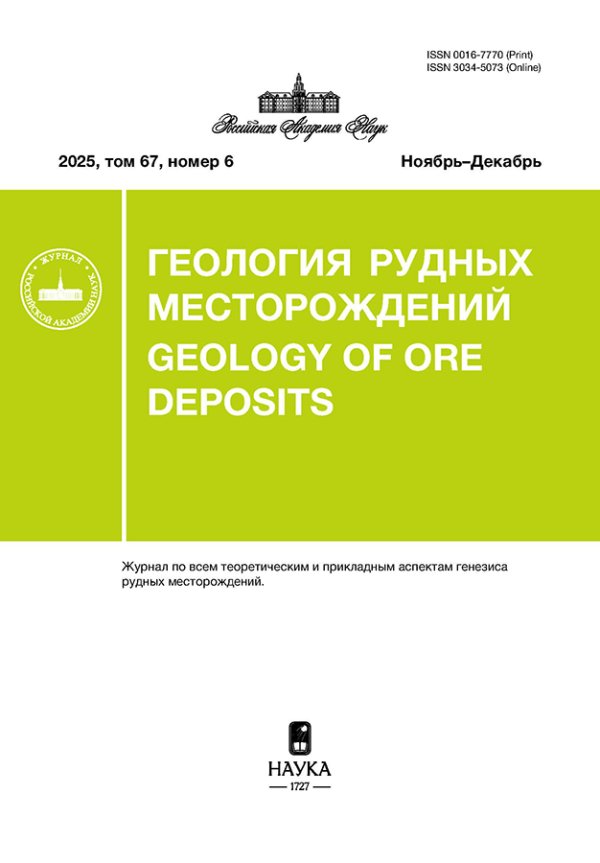Hydrothermal tin and tungsten deposits: historical aspects and present directions of research (to the 115th anniversary of O.D. Levitsky)
- Authors: Soloviev S.G.1, Bortnikov N.S.1
-
Affiliations:
- Institute of Geology of Ore Deposits, Petrography, Mineralogy and Geochemistry (IGEM)
- Issue: Vol 67, No 1 (2025)
- Pages: 3-28
- Section: Articles
- URL: https://journal-vniispk.ru/0016-7770/article/view/285856
- DOI: https://doi.org/10.31857/S0016777025010018
- EDN: https://elibrary.ru/vdpzcl
- ID: 285856
Cite item
Abstract
The paper considers the main results of the works by O.D. Levitsky in studying tin and tungsten deposits and their further development in the context of the evolution of the metallogenic theory. His input to the modern metallogenic classification of tin and tungsten deposits is recognized, with distinguishing the types of tungsten-polymetallic and tin-polymetallic deposits related to the intrusions of the deeply-derived mafic magma, in contrast to tin-tungsten deposits related to granitoid igneous suites dominantly of the crustal nature. According to the metallogenic views of O.D. Levitsky, a control of large tin and tungsten mineralized districts, as well as the deposits within these districts, by large “concealed” faults (“photolineaments”) was demonstrated, together with the relationships of the districts to the variously-sized “chamber” structures, with the characteristic leveled distribution of ore mineralization. The works by O.D. Levitsky paid significant attention to the mineral stages and zonation of tin and tungsten deposits, with distinguishing post-greisen stages of mineralization including quartz-tourmaline-chlorite metasomatites and later lower-temperature metasomatites comprising light micas, in contrast to greisens referred to as phyllic and carbonate-phyllic alteration. He justified a pulsing centrifugal “case-covering” mineral and ore zonation at some Sn deposits. A viewable place in the works by O.D. Levitsky is given to the peculiarities of mineral-forming fluid composition at Sn and W deposits, aggregate state of the fluids, and their evolution during the multi-stage ore formation. He paid particular attention to the existence of collomorphic cassiterite varieties, which are high-temperature and formed at the early stages of post-magmatic ore-formation. Some modern directions in studying tungsten and tin deposits are considered, including classification of Sn and W deposits and their positions in the series of related metallogenic types of ore deposits, possibility of the mantle sources of the productive magmatism, metals and fluids, some aspects of distinguishing hydrothermal stages related to the evolution of multi-phase magmatic intrusions, possible role of the “transmagmatic” fluids, and the aspects of unified systematics of hydrothermal-metasomatic formations at ore deposits.
Full Text
About the authors
S. G. Soloviev
Institute of Geology of Ore Deposits, Petrography, Mineralogy and Geochemistry (IGEM)
Author for correspondence.
Email: serguei07@mail.ru
Russian Federation, Moscow
N. S. Bortnikov
Institute of Geology of Ore Deposits, Petrography, Mineralogy and Geochemistry (IGEM)
Email: serguei07@mail.ru
Russian Federation, Moscow
References
Supplementary files




















